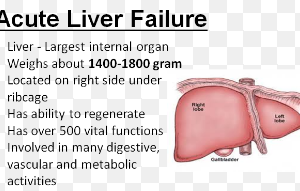At what percentage must ejection fraction in chronic heart failure get before you begin having symptoms? Is there a clear cutoff percentage?
With each heartbeat, blood is pumped out to be circulated throughout the body.
This oxygenated blood comes from a greater amount that fills the heart before each beat.
The amount pumped out, divided by the amount that had filled, times 100 equals the ejection fraction.
Normal EF is 50-70%. This range is not relative to 100%. An EF of 70% is excellent but should not be higher.
Needless to say, an EF below 50% means that the heart is failing to pump adequate amounts of blood.
As ejection fraction in chronic heart failure drops, symptoms begin surfacing and, over time, will steadily get worse – even with medication, a healthy body weight, physical activity and a reduced sodium diet.
Symptoms of Chronic Heart Failure
“Symptoms of HF include: dyspnea [shortness of breath], fatigue, exercise intolerance, abdominal bloating, early satiety, edema,” says Beth Davidson, DNP, past president of the American Association of Heart Failure Nurses.
“However, it is important to note that ejection fraction does NOT always correlate with symptoms.”
Davidson describes the typical ranges of ejection fraction as follows:
- HFrEF (heart failure with reduced ejection) = EF ≤ 40%
- HFmrEF (heart failure with mildly reduced EF) = EF 41-49%
- HFpEF (heart failure with preserved ejection fraction) = EF 50%
Davidson explains, “Although ejection fraction may be reduced or preserved, signs and symptoms are the same.
“The two most commonly reported symptoms are shortness of breath and fatigue.”
A person with an EF of 40% may experience more pronounced symptoms than a person whose EF is 35%.
Furthermore, symptoms of CHF don’t magically set in at a specific percentage.
There is no cutoff point after which symptoms arise all the time and, before which, there will be zero symptoms.
There are people walking around totally unaware that they’re in the early stage of heart failure.
They might all have the same ejection fraction but with varying degrees of symptoms that are flying below the radar.
There may also be some who don’t even have any symptoms – yet.
This group will eventually get them, while the people who are unaware of their symptoms will eventually begin noticing them or taking them more seriously.
For example, a person may already be experiencing bloating, appetite suppression and lower extremity edema.
But if they’re obese, they may welcome the appetite suppression while blaming it on stress.
They may attribute a feeling of bloat from a harmless indigestion, and may attribute a visible increase in girth to “getting older” or “weight gain from a slowing metabolism.”
The edema may get mistaken for more fat in that area – if it’s even noticed at all.
Certainly, a person with a very low ejection fraction will have substantial shortness of breath and become easily fatigued from light exertion.
At the same time, they may not have edema or bloating.
In a nutshell, there is no cutoff percentage.
 Beth Davidson is a nurse practitioner specializing in heart failure, based in Nashville, TN, and former director of the Heart Failure Disease Management Program at TriStar Centennial Medical Center in Nashville.
Beth Davidson is a nurse practitioner specializing in heart failure, based in Nashville, TN, and former director of the Heart Failure Disease Management Program at TriStar Centennial Medical Center in Nashville.
 Lorra Garrick has been covering medical, fitness and cybersecurity topics for many years, having written thousands of articles for print magazines and websites, including as a ghostwriter. She’s also a former ACE-certified personal trainer.
Lorra Garrick has been covering medical, fitness and cybersecurity topics for many years, having written thousands of articles for print magazines and websites, including as a ghostwriter. She’s also a former ACE-certified personal trainer.
.










































